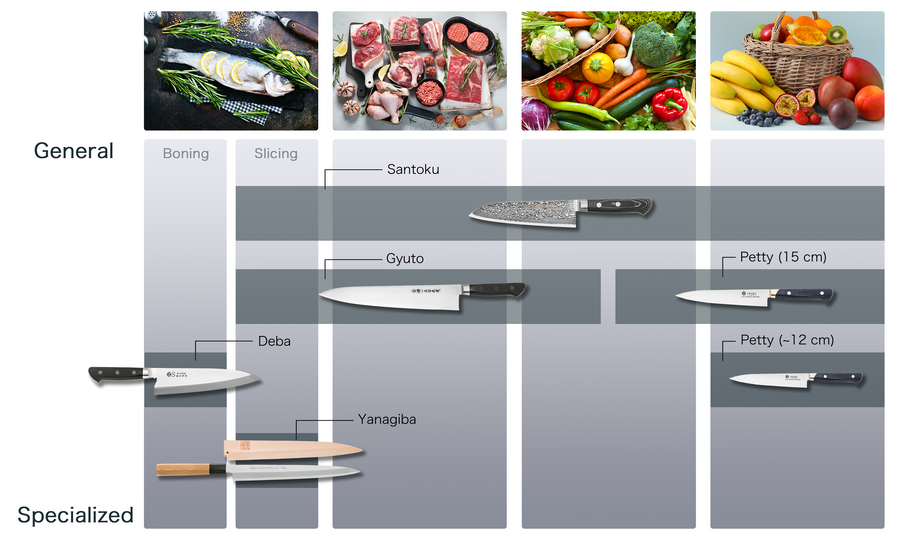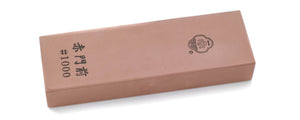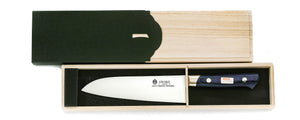Japanese Kitchen Knives

Sakai Ichimonji Mitsuhide has supported Sakai knifemakers for over 70 years, helping them design, create, and sell traditional Japanese kitchen knives globally while supporting an industry of veterans and master chefs throughout Japan. As these gain popularity worldwide more and more every day, get a Japanese knife made in Japan by master artisans right from the source.
How to Choose a Japanese Kitchen Knife
Carbon steel vs stainless steel knife—which is better?
This is the question most first-time chef knife buyers are curious about. The best choice depends on how you intend to use your knives long-term.
Due to its material properties, carbon steel stays sharper longer than stainless steel. Despite being harder than stainless steel, carbon steel is much easier to sharpen. This is critical because knives don't stay sharp for long if used frequently. As for cleaning a carbon steel knife, be careful not to use harsh dishwashing detergent. After rinsing with water, dry them with a cotton cloth thoroughly (do not leave them to air dry) because carbon steel knives are prone to rust and must be cared for quickly and regularly. This may feel like a hassle at first, but it will become second nature to you.
With stainless steel, you don't have to worry about keeping rust at bay as much. Furthermore, the performance of stainless steel has improved significantly in recent years. Silver Steel #3, a type of stainless steel, can be made tenacious through proper forging, making its sharpness like knives made from carbon steel. No matter which you choose, whether it is carbon steel or stainless steel knives, the key is caring for them long-term.
How are premium knives different? Why pay more?
Knives vary in price according to the kind of steel, manufacturing processes, finishes used, and artisans involved. Experts of gourmet Japanese cuisine can taste the difference between eating a dish prepared with a premium knife versus a standard one.
At Sakai Ichimonji Mitsuhide, we have served the strict demands of Japan's top chefs for generations. Our headquarters are in Osaka City's Doguyasuji shopping district, a famous street full of specialty shops selling cookware, kitchen utensils, and restaurant supplies. Being on this street means we've gotten continuous feedback from discerning culinary professionals for over 70 years.
For those who invest in our knives, cooking is a way of life. In a sense, we feel like partners supporting their careers. Thus, it's only natural that we offer ongoing after-care such as free sharpening services to those who chose us for their knife needs, on top of making high-end knives to meet their strict demands.
Of course, the mass manufacturing of knives can be accomplished by removing steps from the process and compromising quality. However, while this may reduce the price, it degrades performance and durability. In an environment where even a tiny drop in quality is noticed, our range of more than 2,000 knives has earned a reputation as among the best. Our craftsmen are incredibly particular about the forging process, which results in blades that are finished to be ultra-thin and sharp.
Of course, there are different steel grades, so more often than not, the higher the price, the better the performance. However, we invite you to compare our knives to those found elsewhere. Even if you find one made of the same material and at a similar price, we think you will find ours superior in all aspects.

How to Choose a Japanese Kitchen Knife for Beginners
Japanese kitchen knives are famous for their design, history, and cutting performance. This guide will help you select the best knife for your needs.































